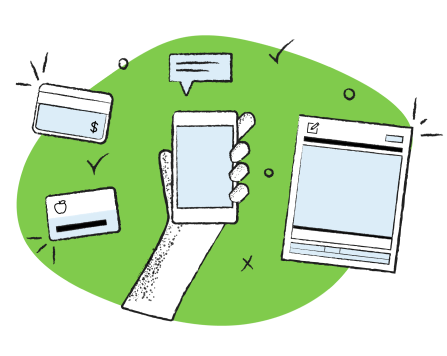
Apply for benefits easily online.
Submit your application for Minnesota benefits in 20 minutes or less.

Already applied?
Waiting to hear back?
Steps for Applying
Step 1: Apply once
You can apply for multiple benefit programs for yourself and other members of your household in just one application.
Step 2: Upload your documents
Upload required documents like pay stubs, rent receipts, and bank statements as part of your application. You can also return to our homepage to add documents later.
Step 3: Allow time for a worker to review
Your application and documents will be reviewed by eligibility workers from your county or Tribal Nation.
Step 4: Complete an interview
Most programs on this application require an interview to receive benefits. You can have your interview by phone or face-to-face. Your county or Tribal Nation will contact you by phone or mail to schedule. In some cases, more follow-ups may be needed after your interview.
Apply to these programs
Food assistance (SNAP)
SNAP helps Minnesotans get the food they need. You'll get an EBT card that you can use like a debit card to buy groceries at most stores and farmer's markets.
Learn more about the SNAP program, eligibility requirements, and other food assistance resources.
Cash programs
Cash assistance helps people meet their basic needs until they are able to support themselves. You will get an EBT card that you can use like a debit card. Here are the most common cash programs:
- Diversionary Work Program (DWP)
- General Assistance (GA)
- MN Family Investment Program (MFIP)
- MN Supplemental Aid (MSA)
- Refugee Cash Assistance (RCA)
- Tribal TANF
Learn more about cash assistance programs and eligibility requirements.
Emergency Assistance
Emergency Assistance helps with shelter payments, such as past due rent, to stop evictions or foreclosure. It can also be used for utilities when there is a threat of disconnection.
Learn more about Emergency Assistance (for families with children) and Emergency General Assistance (for adults without children in the household)
Housing Support (GRH)
The Housing Support program used to be called Group Residential Housing (GRH). The program helps seniors and adults age 65 or older and/or adults with disabilities who have low income pay for housing costs and things people need to stay housed in certain group settings or in the community. It helps prevent people from living in institutions or becoming homeless.
Learn more about the Housing Support program or find more resources that can help with housing.
Child Care Assistance
Child Care Assistance helps families pay for day child care so that parents can pursue employment or education. It is for children age 12 and younger.
Learn more about Child Care Assistance program requirements, and other child care resources.
